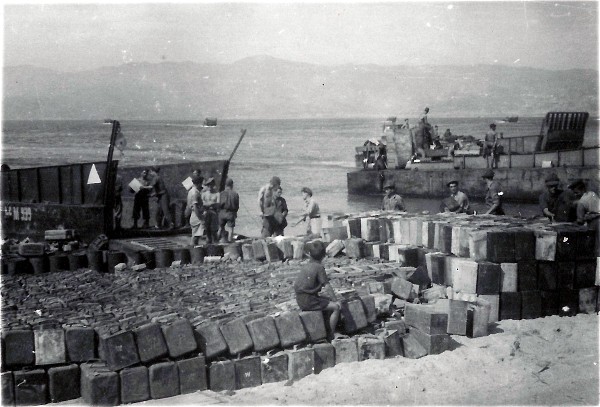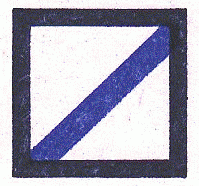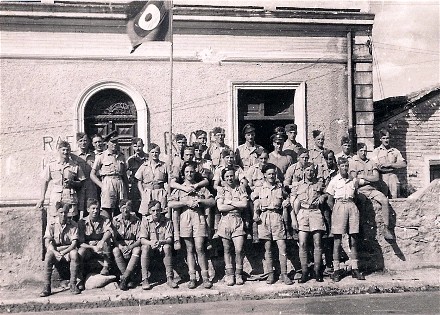No. 33 Beach Brick, R.A.F. Component
There is no Operations Record Book available for the R.A.F. Component of 33 Beach Brick so the information we have comes from other sources.
From the history of 1st Battalion, Argyll and Sutherland Highlanders, the infantry battalion that formed the core of the Brick, we learn that the Brick was formed on 1st April 1943 and was, at first, named No. 3 Brick. This was changed to No. 33 Brick early in May 1943.[1]
On 22nd May, shortly after No. 33 Beach Brick had moved to Aartouz, near Damascus, they were joined by Squadron Leader Davies who was to command the R.A.F. Component, and two other R.A.F. officers, one of whom was Flight Lieutenant J.C. Roberts.
No. 33 Beach Brick embarked on ships at Port Said on 30th June 1943 and landed in Sicily with the 17th Brigade, 5th Infantry Division on 10th July (D-Day for Operation “HUSKY”). They landed near Cassibile, 10 miles south of Syracuse, on Beach 44, known as ‘George’ beach. The 5th Infantry Division was part of the 8th Army’s 13 Corps.
On 27th July, 1st Argyll and Sutherland Highlanders were ordered to move to the front line and the 1st Battalion Welch Regiment (from 34 Beach Brick) took over the running of 33 Beach Brick. However by mid August the Beach Bricks were being reassembled for their next operation and 33 Beach Brick was formed again with 1st Argyll and Sutherland Highlanders near Misterbianco (not far from Catania).
As 33 Beach Brick prepared for the next operation, Acting Squadron Leader C.W. Lovatt (131230) Equipment Branch, took over command of the R.A.F. Component.[2]
The next operation was “BAYTOWN” and 33 Beach Brick were again to land with 17th Brigade of 5th Division. On 3rd September 1943 (D-Day for Operation ”BAYTOWN”), 33 Beach Brick landed on the toe of Italy on the “How” beaches in a small bay north of the Torrente Torbido, near Reggio.

On the 19th September the 1st Argyll and Sutherland Highlanders were again withdrawn, this time to be permanently reinstated as a fighting battalion. Once again, 1st Battalion Welch Regiment (from 34 Beach Brick) took over the running of 33 Beach Brick from the Argylls.
In November 1943 R.A.F. beach units in the Mediterranean were reorganised and 33 Beach Brick R.A.F. Component was disbanded.
See also the memoirs of Sgt. W. Sinclair MacLeod who served with 33 Beach Brick, R.A.F. Component. The photographs on this page are his and are included with the kind permission of his family.
[1] Graham (Lt-Col. F C C), “History of the Argyll & Sutherland Highlanders 1st Battalion (Princess Louise’s) 1939-1945”, Thomas Nelson and Sons Ltd. 1948
and
WO 169/13684 Brick: 33 Brick Argyll and Sutherland Highlanders, War Diary at The National Archives
[2] An entry, dated 31/8/43, in the Operations Record Book of 31 Beach Brick, R.A.F. Component states, ‘F/Lt. C.W. Lovatt (131230) Equip branch promoted Temp Sqdn Ldr. wef 1/7/43. Auty. ME POR Ser. No. 879 Page 3 d/d 3/8/43’. An entry in the Operations Record Book of 36 Beach Brick, R.A.F. Component states that on 5th November 1943 the unit was visited at Kabrit C.T.C. by ”S/Ldr. Lovatt, late O.C., R.A.F., 33 BRICK.“ Squadron Leader Lovatt later became the officer commanding No. 108 Beach Flight of No. 4 Beach Squadron for Operation “OVERLORD”

